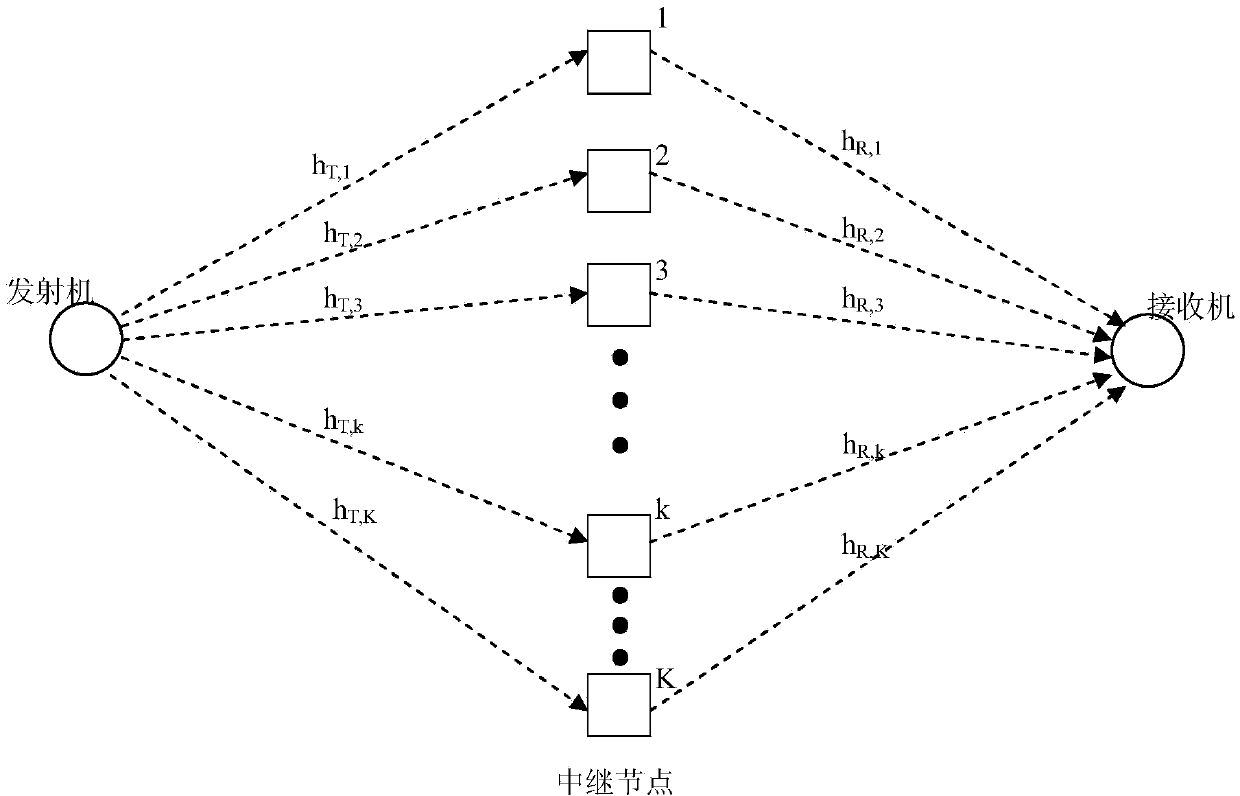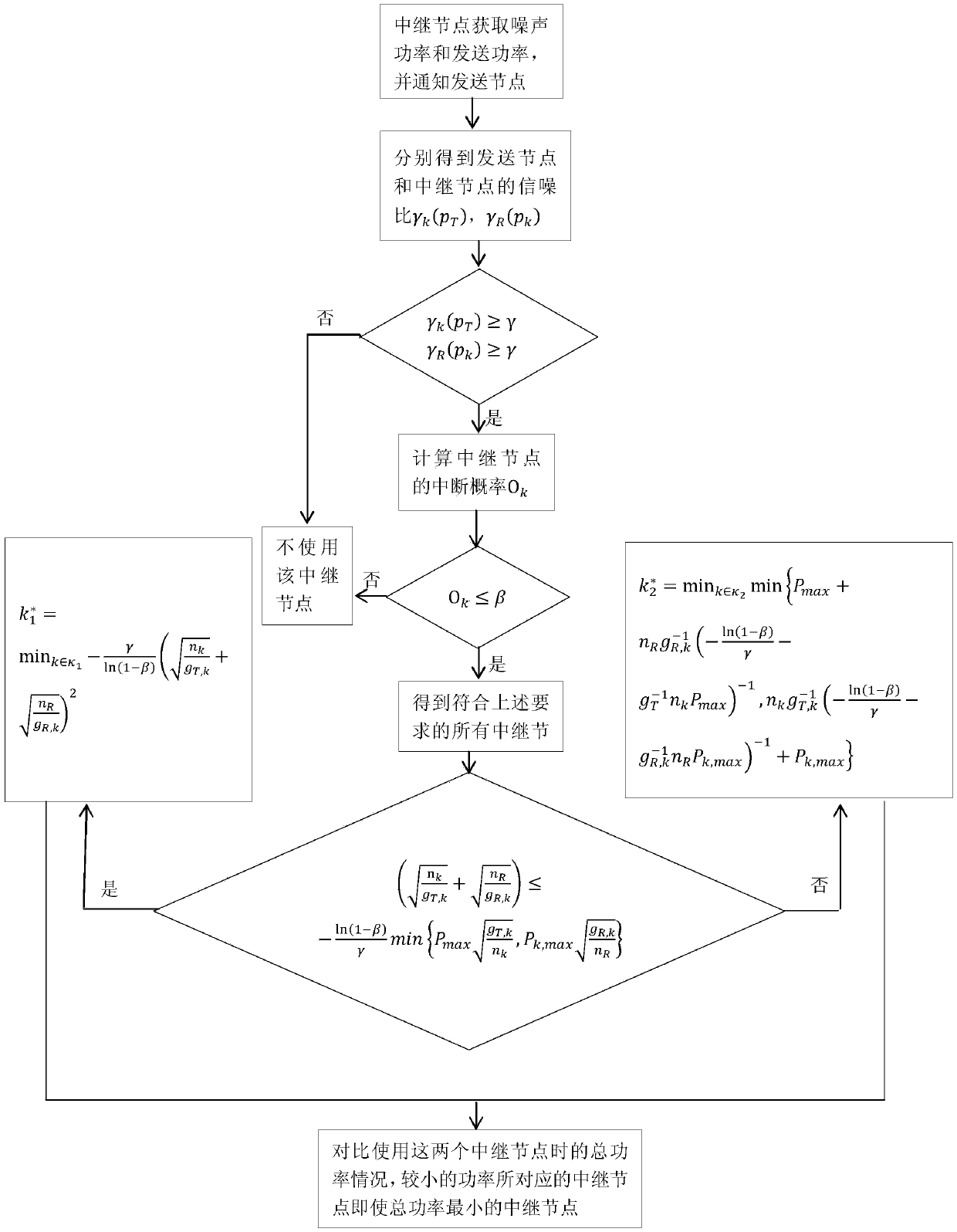Relay node selection method for minimizing end-to-end sending power in Rayleigh fading channel
A relay node and sending node technology, applied in the field of communication, can solve the problem of high sending power, etc., and achieve the effect of reducing power consumption and increasing system efficiency
- Summary
- Abstract
- Description
- Claims
- Application Information
AI Technical Summary
Problems solved by technology
Method used
Image
Examples
Embodiment Construction
[0072] The present invention will be described in further detail below in conjunction with the accompanying drawings.
[0073] refer to figure 1 and figure 2 , a relay node selection method that minimizes the end-to-end transmission power in a Rayleigh fading channel. The implementation of this method can reduce the total transmission power and increase the system benefit. The present invention is based on a network system with K relay nodes (such as figure 1 shown). In the relay network system, the source node forwards the information to the destination node through the relay nodes with different power. The method proposed by the invention for selecting a suitable relay node to minimize the total transmission power for the relay network has the following steps (such as figure 2 shown):
[0074] 1) Each relay node senses the channel gain from the sending node to itself and from itself to the receiving node, and then notifies the sending node of the channel gain and the ...
PUM
 Login to View More
Login to View More Abstract
Description
Claims
Application Information
 Login to View More
Login to View More - R&D
- Intellectual Property
- Life Sciences
- Materials
- Tech Scout
- Unparalleled Data Quality
- Higher Quality Content
- 60% Fewer Hallucinations
Browse by: Latest US Patents, China's latest patents, Technical Efficacy Thesaurus, Application Domain, Technology Topic, Popular Technical Reports.
© 2025 PatSnap. All rights reserved.Legal|Privacy policy|Modern Slavery Act Transparency Statement|Sitemap|About US| Contact US: help@patsnap.com



